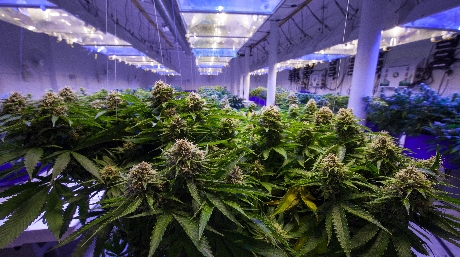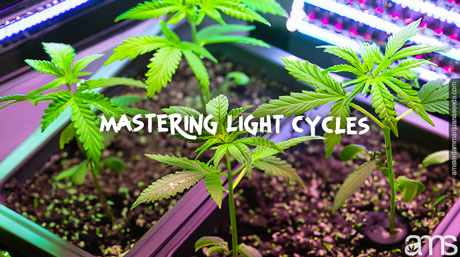The concept of ‘top-shelf bud’ transcends the realm of marijuana cultivation and encapsulates a unique form of artistry. This premium quality cannabis, known colloquially as ‘the cream of the crop,’ is the epitome of what dispensaries offer their customers.
It represents the highest tier of cannabis quality, painstakingly cultivated to provide an unmatched consumption experience for both novice and seasoned users. Every inhalation of this rarefied cannabis strain is akin to savoring a finely aged wine; every leaf is precious, and not a single bit should go to waste.
The meticulous cultivation of top-shelf buds can often leave amateur growers in awe and filled with questions.

How do dispensary cultivators consistently manage such a high caliber of marijuana growth, while their own harvests fall short? The secret isn’t hidden in exclusive fertilizers or top-of-the-line, budget-busting equipment. Instead, it’s rooted in a nuanced understanding of the cannabis plant, a careful application of knowledge, and a willingness to invest time and effort in ensuring the plant’s health and development.
A key insight to remember is that anyone can cultivate top-shelf cannabis. While it may sound like a daunting challenge, with the right approach and methodology, producing high-quality cannabis isn’t limited to experienced growers or those with large budgets.
A robust knowledge foundation, careful observation, patience, and the ability to adapt to the needs of the plant can turn an ordinary growth into an extraordinary one.
This unique grade of cannabis requires meticulous care throughout its life cycle, from germination to harvest. Cultivating top-shelf buds is about understanding the plant’s lifecycle intimately and catering to its needs at every stage. The process starts with quality seeds, continues with proper soil and lighting conditions, and culminates with careful harvesting and curing practices.
Every step of the way, attention to detail is key, and the willingness to learn and adapt based on the plant’s response can make all the difference.
In essence, premium bud cultivation hinges upon optimizing several key elements. The conditions under which the cannabis plant grows, the nutrients it receives, the attention it gets from the grower, and even the air it breathes can play a role in determining the final quality.
There’s an old saying that ‘the best fertilizer is the gardener’s shadow,’ and when it comes to growing top-shelf bud, it’s an adage that holds particularly true.
So, while cultivating top-shelf buds may seem like an art form reserved for experienced growers, the truth is far more democratizing. It’s an art that can be learned, practiced, and mastered by anyone willing to take the time and make the effort.
Armed with knowledge, determination, and a little bit of a green thumb, your next harvest could well be a treasure trove of top-shelf buds.
Throughout the lifespan of a marijuana plant, a myriad of challenges can arise. These can range from seemingly minor nutrient deficiencies to severe pest infestations, each of which has the potential to significantly impact the plant’s health and the quality of the buds it produces.
Overcoming these hurdles may still yield a satisfactory harvest, yet to truly achieve the distinction of ‘top-shelf bud,’ your plants need to progress through their life cycle as smoothly as possible. Any substantial disturbances can hinder the development of the bud, resulting in a loss of potential potency and a less desirable aesthetic.
For this reason, understanding the basics of marijuana growing becomes paramount. Consider this knowledge akin to building a solid foundation for a house. A well-built foundation ensures the house can withstand storms and other natural adversities, and the same principle applies to cannabis cultivation.
Before you even begin the process of germination, it’s critical to familiarize yourself with the potential pitfalls of marijuana growing. These could include improper watering habits, incorrect lighting conditions, poor air circulation, or over-fertilization, among others. A comprehensive understanding of these common mistakes, along with the strategies to prevent them, can be invaluable as you navigate the cultivation process.
However, knowledge alone is not enough. Successful cultivation also requires attentiveness and adaptability. Observing your plant’s growth and development, responding to its needs, and adjusting your care regimen based on these observations are vital aspects of the cultivation process.
This careful observation and swift intervention, when problems arise, can help mitigate potential damage, ensuring that your plant’s development remains on track for optimal bud production.
Similarly, the cultivation environment plays a critical role in the growth of your plants. An environment that maintains the right temperature and humidity levels can significantly improve the health of your plants.
Investing in good quality equipment such as grow tents, efficient ventilation systems, and reliable temperature and humidity monitors can go a long way in ensuring that your plants have the optimal conditions they need to thrive.
Cannabis cultivation is a journey that requires patience, dedication, and a willingness to continually learn and adapt. Ensuring a smooth growth cycle for your plants is one of the key steps toward achieving a high-quality yield.
Cultivating top-shelf buds is not simply about avoiding common mistakes; it’s about going the extra mile to understand your plants, care for them, and provide them with the best possible environment in which to flourish.
By doing so, you significantly increase the chances of your cannabis plants producing the kind of premium quality buds that are worthy of the ‘top-shelf’ label.
Light exposure plays a pivotal role in the life of a marijuana plant, directly influencing its growth, development, and ultimately, the potency of the buds it produces. The type, intensity, and duration of light a cannabis plant receives can profoundly impact the final yield’s size and quality.
Even if you begin with a seed that boasts a high THC percentage, the plant will never reach this potency without adequate light exposure. Akin to the way that humans need various nutrients to grow and develop, cannabis plants require light for photosynthesis, the process through which they convert light into energy for growth.
The appropriate light intensity hinges on several factors including the size of the plant, the strain, and the stage of growth. Marijuana plants require different light intensities at different stages of their life cycle. For instance, during the vegetative stage, cannabis plants typically thrive under 18-24 hours of light per day. Conversely, during the flowering stage, a 12/12 light/dark cycle is usually recommended.
It’s also important to consider the type of light you use. Different light sources, such as High-Pressure Sodium (HPS) lights, Compact Fluorescent Lights (CFLs), Light Emitting Diodes (LEDs), and Metal Halide (MH) lamps, all offer various advantages and drawbacks.
These can range from differences in light spectrum and intensity to energy efficiency and heat output. Choosing the right light source requires careful consideration of your specific growing setup and the requirements of the cannabis strain you’re growing.
For instance, while HPS lights have been a long-standing favorite among indoor growers due to their high intensity and yield-boosting capabilities, they can also produce a significant amount of heat, which might not be suitable for smaller or poorly ventilated grow spaces. On the other hand, LEDs are more energy-efficient and produce less heat but may require a larger initial investment.
Pay close attention to your plant’s response to the light as well. Just as with humans, too much exposure to intense light can be harmful to marijuana plants, leading to issues such as light burn or bleaching. This is why it’s crucial to ensure your plants are neither too close to nor too far from the light source.
In essence, optimal lighting conditions are as essential as quality genetics when it comes to growing top-shelf buds. Proper lighting contributes to a plant’s ability to grow vigorously and produce bountiful, potent buds. Consequently, the knowledge of how to manipulate and optimize lighting conditions for cannabis cultivation can be a decisive factor between an average and an exceptional harvest.
The journey to top-shelf bud doesn’t end with the completion of the flowering stage; the processes of harvesting and curing are just as crucial.
Proper execution of these steps ensures the buds attain and retain their peak potency and express their unique array of cannabinoids, terpenes, and essential oils, which are responsible for the distinct aroma, flavor, and effects of different cannabis strains.
Timing is everything when it comes to harvesting. Harvesting too early or too late can detrimentally affect the final product’s quality. Observing the color change in the pistils – the hair-like structures on the bud – can provide a helpful indication. When about 70% of these pistils darken and curl inwards, it usually signifies that the plant is ready for harvesting.
For more precise timing, scrutinizing the color of the trichomes – the tiny, crystal-like structures coating the bud – can be highly effective. Trichomes serve as the cannabis plant’s cannabinoid factories, and their color can provide valuable insight into the cannabinoid content of the buds.
When approximately 70% of the trichome heads take on a milky appearance and the remaining 30% exhibit an amber hue, it generally indicates the plant is at the peak of THC production, marking the perfect time to harvest.
Following the harvest, the drying and curing processes begin. Both steps are vital in preserving the quality of the buds and enhancing their flavor and aroma.
Drying should be a slow process, typically taking about 5 to 10 days, performed in a controlled environment with ideal temperature and humidity levels. Rushing this process can lead to harsh smoke and a less enjoyable consumption experience.
Curing, the next step involves storing the dried buds in an airtight container over several weeks. This process allows for the gradual breakdown of leftover sugars and chlorophyll in the buds, which can contribute to a smoother smoke and more complex flavor profile.
Each of these steps, while time-consuming, brings its own contribution to the creation of top-shelf buds. The true secret to growing exceptional cannabis lies not only in perfecting each stage but also in recognizing the entire process as a harmonious journey.
With high-quality genetics as a starting point and dedicated care throughout the growing cycle, your marijuana plants have the potential to produce a yield that is nothing short of top-shelf.














Related Posts

Title: Mastering Light Cycles: The Key to Vigorous Vegetative Growth and Optimal Plant Structure in Cannabis Cultivation
This article refers to following topics: vegetative cannabis light cycle, vegetative light for marijuana, vegetative and reproductive growing in cannabis, vegetative cannabis stage, best light spectrum for vegetative growing cannabis, light intensity for vegetative for cannabis, how to increase vegetative marijuana, led light…

Timing that perfect harvest moment is vital for potent cultivation. But when do you harvest? Use the trichomes as your guide.

Lollipopping is an analytical technique that involves pruning cannabis plants, and preferably those planted indoors to come up with better yields. Under most circumstances, this pruning method gets carried out to eliminate the marijuana plant parts that receive the least amount of light.